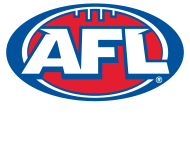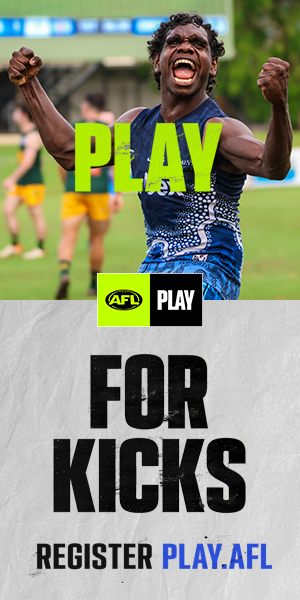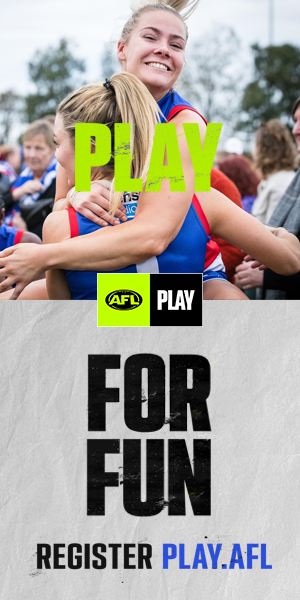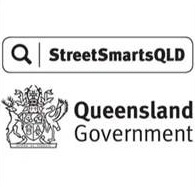A Chronology of Queensland Australian Rules in the Nineteenth Century
From the book RED INVINCIBLES – THE ORIGINS OF QUEENSLAND FOOTBALL, by Murray Bird
1866
May 22 – First meeting of the Brisbane Football Club.
June 1 – The Brisbane Courier published the Melbourne Rules.
June 9 – The Brisbane FC conducted its first “scratch match”.
July 14 – First official match was postponed due to wet weather.
July 21 – All Comers versus Civil Servants at Queen’s Park – Scoreless draw.
July 28 – First match continued. After five and a half hours the first game of football in Queensland was declared a scoreless draw.
August 4 – George Cowlishaw kicked the first goal in Queensland football.
Brisbane FC founder, Charles Wallen, played for Scotch College in 1858 in schoolboy matches that were an early form of Australian Rules.
Fellow founders Tom Board and George Glencross-Smith had both played for Geelong Football Club in the early 1860s.
1867−68
The Brisbane FC played a number of matches against:
Voluntary Artillery
Police
Queens’s Own 50th Regiment
Athletic Club
National Cricket Club
Civil Service
Grammar School
The club also organised intra-club encounters such as:
Married versus Single
Natives versus The World
Civil Servants and Bankers versus The Rest
Cedric Wills (Geelong FC), the younger brother of the “founding father” of Australian Rules, Tom Wills, was playing for the Brisbane FC.
1869
Ipswich Grammar commenced intra-school matches under the headmastership of John McCrae, recently arrived from Scotch College in Melbourne.
Brisbane Grammar played its first match against The National School in late August. One month later Ipswich Grammar and Brisbane Grammar played under the Victorian Rules. Australian Rules football was referred to as the Melbourne Rules or the Victorian Rules prior to 1883.
1870
The Ipswich Football Club formed and commenced matches against the Ipswich Grammar School.
July 23 – Brisbane FC travelled to Ipswich for the first inter-club match in Queensland. 1000 spectators saw Brisbane (the “Metropolitans”) defeat Ipswich (the “Limestonians”) by 1 goal to nil. Behinds were not part of the Victorian Rules scoring system at this stage.
Ex-convict and Irish revolutionary, Doctor Kevin O’Doherty, commenced his fifteen-year term as the president of the Brisbane FC.
1871
Ipswich FC recorded a home win over Brisbane FC in the presence of the Queensland Premier, Arthur Macalister.
The Ipswich Railways Football Club was formed and played matches against the Ipswich FC and Ipswich Grammar.
1872
The two clubs in Ipswich went into recess but Ipswich Grammar continued its matches against Brisbane Grammar. Many of the players in these school teams became the club footballers and administrators of the next fifteen years.
1873
Football clubs playing under the Victorian Rules were commenced in Rockhampton, Toowoomba and Warwick.
1874
The Ipswich FC and Ipswich Railways FC were re-formed.
A Victorian Rules football carnival in Toowoomba was organised for the clubs from Brisbane, Ipswich, Warwick and Toowoomba.
1875
The Brisbane FC played six matches under the Victorian Rules against groups such as the Civil Service and Voluntary Artillery. A seventh match was conducted under a conglomeration of rules against the patients and staff of the Woogaroo Asylum at Goodna. The match resembled a soccer game and may well have been the first “club” soccer match in Australia.
1876-77
The Brisbane FC continued to play under the Victorian Rules but two new clubs (Rangers Football Club and Bonnet Rouge Football Club) were formed in Brisbane and they both expressed desires to play other codes of football.
Consequently, the three clubs played games under the Victorian Rules and rugby. A hybrid of both games was unsuccessfully experimented with.
Brisbane FC continued to play Victorian Rules against organisations such as the Voluntary Artillery. Several intra-club Victorian Rules matches were also conducted by the Brisbane FC.
On the Darling Downs at least four Victorian Rules clubs were participating (Civil Service Football Club, Light Infantry Football Club, Toowoomba Football Club and Warwick Football Club).
The Darling Downs footballers inaugurated the first Australian Rules football association in Australia − the Toowoomba Football Association − twelve months before the commencement of associations in South Australia (South Australian Football Association – SAFA), and Victoria (Victorian Football Association – VFA).
Toowoomba Grammar joined their contemporaries at Ipswich Grammar and Brisbane Grammar in the playing of Victorian Rules. Their headmaster, John McIntosh, was at Scotch College in Melbourne when the Victorian Rules were being played. Most other schools in Queensland were also playing the Australian game.
1878
New Victorian Rules clubs were formed in Brisbane: Brunswick, Cadets, Excelsiors and Grammar School.
New clubs were also formed in Ipswich: Town, Elmiras, Athenians and Fire Brigade.
Former Melbourne Football Club star player and administrator, James MacDonald, arrived in Ipswich and formed a Combined Ipswich team to take on the Brisbane FC. The two clubs played Victorian Rules and rugby matches.
The Rangers FC and Bonnet Rouge FC folded, and after two years of the clubs playing both Victorian Rules and rugby, the Australian game was once again the “game of the colony”.
1879
The Wallaroos Football Club and St Killians Football Club were formed in Brisbane.
The Brisbane FC changed their colours from scarlet to red and black hoops. They dominated the season and earned the title of the Invincible Reds.
Brisbane and Ipswich Grammar old boys filled the ranks of the clubs of southeast Queensland.
Former Brisbane Grammar and Brisbane FC player, Herbert Bryant, was playing in the VFA for the Essendon Football Club. He was selected to represent Victoria in the inaugural intercolonial football match between Victoria and South Australia.
1880
April 30 – The Queensland Football Association (QFA) was formed and it adopted the rules and constitution of the VFA.
Ipswich FC was the champion team of the colony.
1881
Brisbane FC reasserted their claim as champions of Queensland.
1882
Wallaroos FC won the Alfred Shaw Cup – Queensland’s first football trophy.
New clubs were formed on the Darling Downs: Allora, Warwick and Toowoomba. Two clubs were also participating in Charters Towers under the Victorian Rules: Queenton and Towers. Clubs were also commenced in Maryborough and Gympie.
Rovers Football Club, based in the Valley district of Brisbane, joined the QFA. The Rover’s president was the Queensland Premier, Samuel Griffith.
A “junior” competition in the style of a modern day reserve grade was commenced. The four major clubs in southeast Queensland (Brisbane, Ipswich, Wallaroos and Excelsiors) all fielded “second twenties”. New clubs were springing up all over the colony.
Queensland football officials tried unsuccessfully to arrange representative Victorian Rules matches with New South Wales.
There were no rugby clubs in Queensland, but a Queensland “representative” rugby team was sent to Sydney for intercolonial matches. A vast majority of the rugby squad were prominent players in the QFA competition.
1883
Four teams were playing in a Wide Bay competition – Emus (Maryborough), Wasps (Maryborough), Maryborough Grammar and Gympie Hornets.
Rugby clubs were still yet to form in Queensland, but a New South Wales rugby squad toured Queensland, and a local team full of Victorian Rules footballers defeated the southerners at the Eagle Farm racecourse in front of 3500 spectators. It was a famous victory that rocketed the rugby code into the limelight.
The QFA was re-formed in late 1883. Soccer (Anglo-Queensland Football Association – A-QFA) and rugby (Northern Rugby Union – NRU) peak bodies were also formed, sparking a war of words between the codes.
The QFA were represented at the first Intercolonial Football Conference held in Melbourne. All colonies, including New Zealand, agreed to adopt the Australasian Rules of Football. The Australasian title was soon dropped, but the code was more regularly called Australian Rules.
Jack Gibson, the former South Melbourne and Victorian captain, arrived in Brisbane and commenced playing for the Brisbane FC. Several other VFA players were playing for QFA clubs.
1884
Tom Welsby published his book “The Queensland Footballer”, which detailed the key players and history of Victorian Rules clubs throughout Queensland. He noted that there are over 1000 players participating in the Australian game and 80 playing rugby. All schools in Queensland were playing Victorian Rules.
Despite urgings from the NRU, all the clubs of southeast Queensland re-affiliated with the QFA. The NRU formed two clubs with some players drawn from the Brisbane FC and Wallaroos FC.
Queensland’s first Australian Rules Intercolonial matches were played at Albert Park Sports Ground, Brisbane.
August 20 – New South Wales 7.10 defeated Queensland 3.11 (Attendance: 2500)
August 30 – Queensland 3.7 defeated New South Wales 2.9 (Attendance: 3000)
The New South Welsmen also travelled west and played matches against Ipswich FC and Toowoomba FC.
Excelsiors’ star player, Jimmy Kelly, kicked all three goals for the Queenslanders in their victory in the second intercolonial match. He was dubbed “Intercolonial Kelly” by the local press. The Melbourne Football Club recruited Jimmy Kelly in 1885. Brisbane FC’s Ted Baines also went south to play for the strong VFA club, Hotham (now known as North Melbourne).
Harry Pritchard, Syd Pritchard, Tom Pratten, George Pratten, Frank Baynes, Pring Roberts and Tom Bond represented Queensland in both rugby and Australian Rules.
Many players commenced playing both rugby and Australian Rules.
1885
Charters Towers, Townsville and Cairns participated in inter-town Australian Rules matches.
Victorian Rules was also commenced in Adavale, Cunnamulla, Gladstone, Mackay, Normanton, Roma, Stanthorpe and Thargomindah.
The originators of Australian Rules football clubs around Queensland were predominantly old boys of Ipswich, Brisbane and Toowoomba Grammar.
Rovers FC join the QFA senior competition and the Toowoomba FC played several matches against QFA clubs.
Up to twenty junior clubs were formed in the growing suburbs of Brisbane and Ipswich. There were over 40 Australian Rules clubs spread throughout Queensland. At the same time there were less than 6 rugby clubs and only 3 soccer clubs.
Ipswich FC travelled to Maryborough and Gympie for representative matches.
The New South Wales Football Association (NSWFA) reneged on an arrangement for the QFA to tour south with a representative team. Highly successful representative rugby matches were held by the NRU in Brisbane.
Australian Rules’ position as the premier code in Queensland began to decline as a result of an inability to secure regular intercolonial fixtures.
Wallaroos FC withdrew from the QFA and joined the NRU.
1886
The Townsville Football Association was formed.
Ipswich FC commenced a period of dominance of the QFA competition.
The Unions Football Club and Rosewood Football Club, both from the Ipswich district, joined the QFA.
The QFA toured New South Wales and played four matches against club teams, and two intercolonials against the NSWFA.
June 19 – New South Wales 4.13 defeated Queensland 1.7 (Attendance: 2000)
June 26 – New South Wales 9.11 defeated Queensland 1.7
The poor results from the QFA tour to the New South Wales were not well received by local football followers.
Brisbane Grammar conducted a “great football debate” on the whether the school should continue its eighteen-year involvement with Australian Rules. The Australian game won the day, but only narrowly.
Ipswich FC was undefeated in the QFA competition.
1887
Brisbane, Ipswich and Toowoomba Grammar schools continued to play inter-school Victorian Rules matches, but the Brisbane Grammar club that had played in the junior grade since the late 1870s withdrew from the QFA competition and joined the NRU. The NRU now boasted more than twice the number of clubs of the QFA. Some regional centres (including Warwick and Toowoomba) had switched to the rugby code.
The QFA competition added South Brisbane Football Club. The senior competition had five affiliated clubs: Brisbane FC, Excelsiors FC, Ipswich FC, Rovers FC and South Brisbane FC.
A premiership dispute between the Ipswich FC and South Brisbane FC marred the end of the season. There was no resolution to the disputed premiership. Ipswich FC was undefeated once again and they were clearly the premier club.
The NRU instituted a challenge trophy for their many clubs. A new rugby club from Ipswich, the Rangers, won the inaugural trophy. At the end of the season the all-conquering Ipswich FC challenged the Ipswich Rangers to a rugby match. Ipswich defeated the Queensland rugby champions in convincing fashion at their own game.
After twenty-two seasons the Brisbane FC played their last match.
Jimmy “Intercolonial” Kelly was elected captain of the Melbourne FC.
1888
The Melbourne FC toured Queensland and Jimmy Kelly was in their squad. They played both of their intercolonial matches at the Exhibition Ground.
June 16 – Melbourne 6.16 defeated Queensland 3.5 (Attendance: 5,000)
June 20 – Melbourne 4.16 defeated Queensland 1.5 (Attendance: 4,000)
In spite of the huge attendance and the success of the Melbourne tour, Australian Rules was overshadowed by a rugby tour by an English team.
Kangaroo Point Football Club replaced Brisbane FC in the senior QFA competition. The QFA junior competition went into recess.
Ipswich FC was undefeated for the third consecutive QFA season. Ipswich FC also travelled for twenty-four hours via the Bremer and Brisbane Rivers to Maryborough to take on their representative team.
The code of Australian Rules was thriving in the Wide Bay region, and they gave the Ipswichians their toughest competition of the season. A young indigenous footballer by the name of Frank Ivory was outstanding for the Maryborough team.
Australian Rules was on the decline in Brisbane, but it continued to grow in Ipswich. Two new clubs formed in Ipswich during the season – Belvederes Football Club and Almiras Football Club.
Brisbane, Ipswich and Toowoomba Grammar played their last matches of Australian Rules in the nineteenth century and were to not play the code again for over 100 years.
1889
Long-term QFA affiliates the Rovers FC and Excelsiors FC withdrew from the QFA competition and were replaced by the City Football Club and the Valley Football Club.
A scheduled tour by the QFA to the strong Australian Rules playing district of Newcastle/Maitland/Cessnock was cancelled at the last minute by the southerners.
Ipswich FC was undefeated for the fourth year in a row, with only the Kangaroo Point FC providing serious opposition.
Australian Rules in regional Queensland continued to decline with only the clubs of Maryborough playing the code. Late in the season the Maryborough clubs (Victorias and Emus) played a match under electric light.
Maryborough travelled to Brisbane and Ipswich for representative matches against a Combined Brisbane team and the Ipswich FC. Maryborough were narrowly defeated by Combined Brisbane and seriously challenged Ipswich.
Frank Ivory was clearly the best player in Maryborough, and some of the football pundits in Brisbane and Ipswich described him as the finest footballer in Queensland.
1890
Ipswich and Maryborough Australian Rules football remained strong with great interest shown by the players, administrators and football followers. In Brisbane the code was in a weak position. The season commenced with the four Brisbane-based affiliates of the QFA: South Brisbane, City, Kangaroo Point and Valleys but all of these clubs were struggling.
Enthusiasm was generated through the announcement that the greatest team of the nineteenth century, the South Melbourne Football Club, was coming to Queensland. Three matches were arranged for the southerners.
June 21 – South Melb 13.12 defeated Combined Brisbane 2.8 (Attendance: 3,000)
June 23 – South Melb 10.17 defeated Ipswich 5.5 (Attendance: 3,000)
June 24 – South Melbourne 6.17 defeated Queensland 1.0 (Attendance: 300)
The poor showing by Combined Brisbane and Queensland, coupled with ongoing success for NRU representative teams saw the code fold in Brisbane. Ipswich and Maryborough now had no one to play.
1891
No Australian Rules football in Queensland.
1892
A three-team competition was commenced in southeast Queensland: Athenians (from Ipswich), Ipswich and Brisbane. Ipswich FC was again the premier team.
1893-94
Some intra-club matches were played in Ipswich. These were the last games of Australian Rules in southeast Queensland until the turn of the century.
A four-team competition commenced in Charters Towers but by the end of 1894 the clubs were no longer in operation.
1900
A new peak body was formed: Queensland Association of the Australian Game of Football. One match between Ipswich and Brisbane was played.
1903
Another new league was formed: Queensland Football League (QFL), and a new era of the code was commenced.
















































